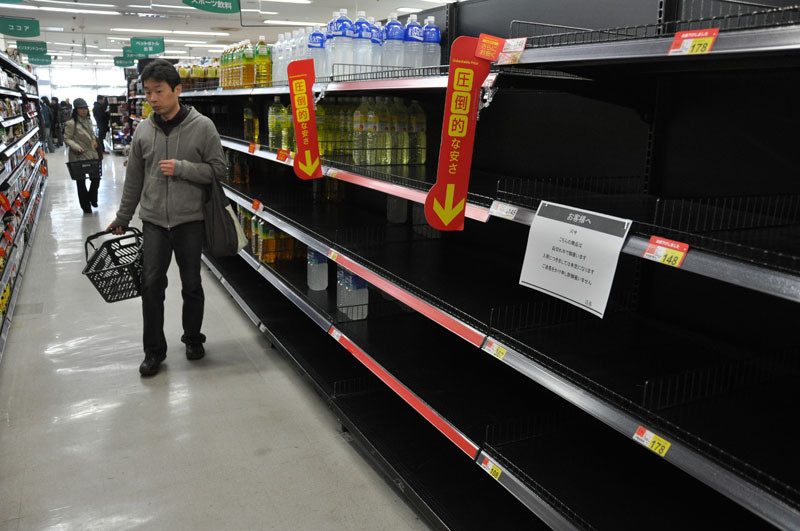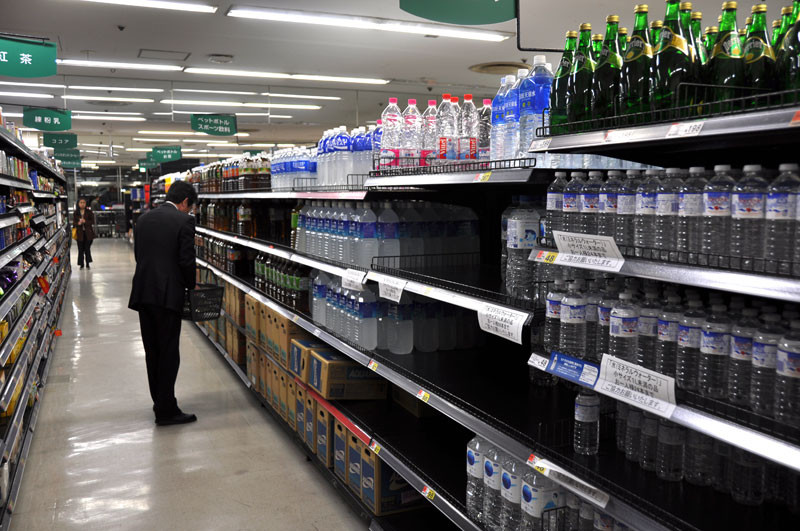Status: May 1, 2011
The New Normal
A friend of mine went home to the States shortly before the Tohoku Earthquake. When he came back in early April, he complained that we had lied when we’d assured him that Tokyo was okay. The escalators weren’t running, the subway stations were dimly lit, and he couldn’t find his favorite foods in the grocery store—that certainly didn’t seem okay!
For someone who didn’t experience the earthquake, the change would be a shock. Tokyo, the city of infinite abundance, was restricted for the first time in half a century. But those of us who were here remember how much changed in the weeks after the quake, and we have developed a new understanding of what is ‘okay.’
Our homes have not been washed away by a tsunami. We are not huddled in a shelter without food, heat, or water when the temperature drops below zero at night. We have not been ordered to leave everything behind to live in a gymnasium or a hallway. We are not relying on donations just to get a hot meal or a pair of shoes. We are fine. We are better than fine.
In the first days after the quake, life was a little more Spartan. But now we can call one another and be assured of getting a connection. Our phone mails don’t linger for hours before they’re received. We can go across town without adding two hours to our travel time, and we don’t need to check the TV to see if our line is running. Trains are almost as frequent as they were before the quake, and they follow the new schedule with the same unerring precision.
Storefronts are darker. Some shops close a little early. Office windows are open for ventilation. We turn off nonessential lights and appliances, and unplug them when we’re out. But we don’t have to sit through three hours of darkness at a time, track blackout schedules online, or watch NHK to see whether the next power outage will be called off.
We no longer have to follow multiple news sources to find out whether our air, food, and water are safe. We know what the background radiation level is: It’s roughly twice what it used to be, and still 10% less than London, 20% less than New York, and half of Hong Kong.
We don’t have to check our embassies’ travel updates every few hours to see whether we’ve been advised to leave the country. We’re not wondering if our friends in the north are alive.
We’ve given up shunning tap water, but we’re still drinking more bottled water, and we check where our food comes from. 2-liter bottles of water are rationed to one per person, but now at least they’re there most of the time. The bread racks are full again, and juice and yogurt have made a comeback, though some spaces still open up in the shelves as the day goes on.
We don’t have aftershocks every twenty minutes. The few that we feel daily barely get our attention, though every few days one will wake us up or get us standing in a doorway, just in case, and we turn on NHK to find out where it was centered. A chorus of phones around us beep when a big one has been predicted, but more often than not, it’s just an overreaction.
We’re not rushing to figure out what microsieverts and becquerels are, or how many are too many. We can turn our TVs off for a few hours and feel assured that nothing vital will change in our absence. When Fukushima’s NISA rating was raised, it was only an acknowledgement of what we already knew. Those of us who were going to leave had already left. Some came back after a few days. The rest left for good.
We balance our news, achieving through aggregation the middle ground between reactionary foreign outlets and complacent local reporting. Facebook is a vital information supplement, an internet within the Internet: Somebody somewhere has found a different outlook. We don’t take analysis at face value, but add every piece to the balance. Some of us want to know it all. Some of us want to put it out of our minds. Some of us are just looking for confirmation that we’ve made the right decision.
Some of us have struggled back into our normal lives. Others have dived into lending a hand. We check the earthquake groups on Facebook, join charities and volunteer groups, see what kind of help is needed. Trucks going north. Drivers wanted. Donations. Food. What goes where? Now that we no longer have to line up for gas, Tokyo is a launch pad, a fueling station, a command center.
We’ve found our new normal. It will change again when the summer heat brings the return of power outages. And then that, too, will become a part of the new normal.
Published in May 2011. Photos © 2011 Michael Kanert.


